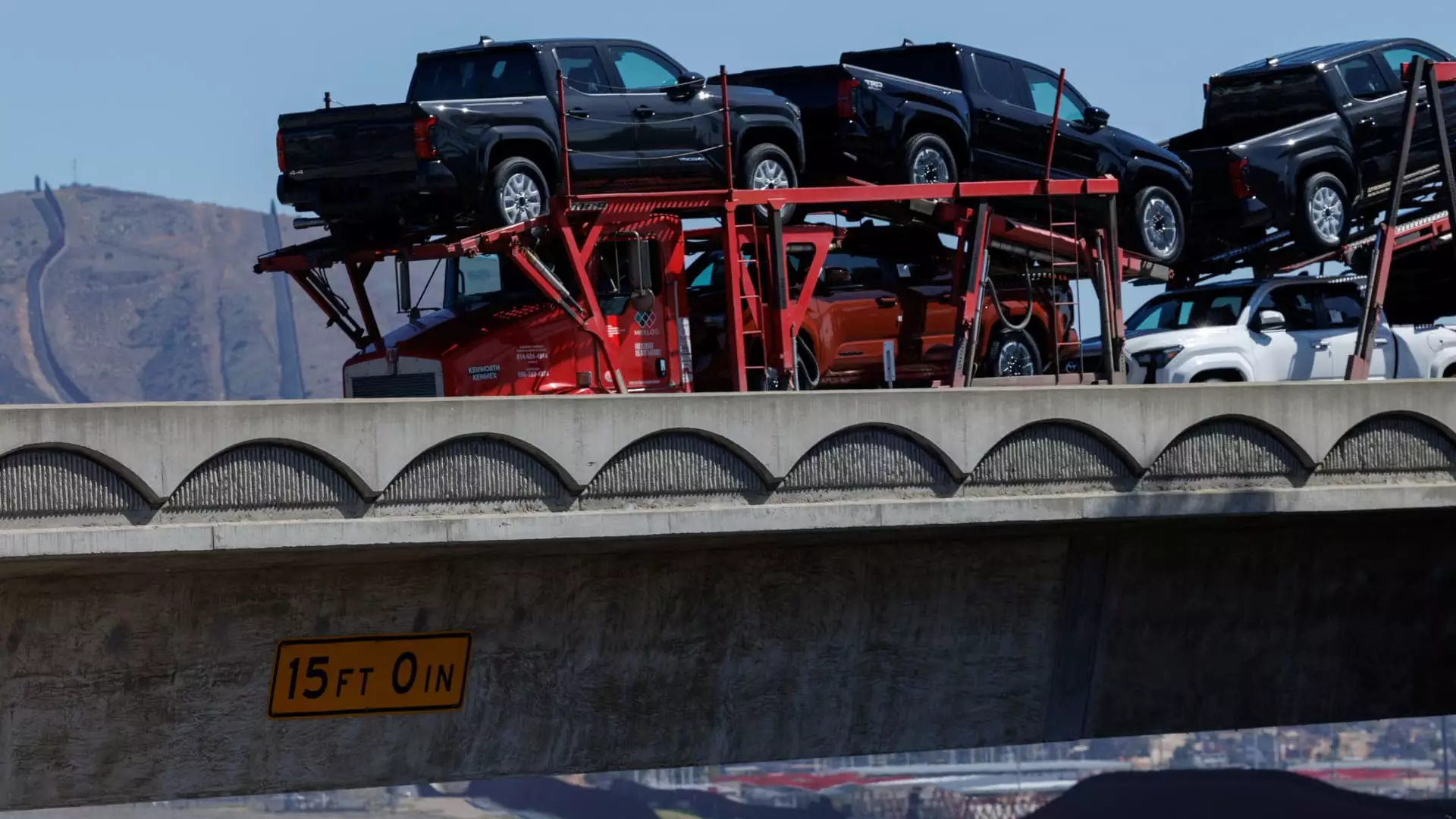The recent announcement from President Donald Trump about imposing a staggering 25% tariff on imported vehicles is potentially creating seismic shifts in the American automotive industry. The move, ostensibly aimed at fortifying domestic production, could end up being a double-edged sword that generates unintended economic consequences. While the immediate response from auto stocks reflected a mix of optimism for certain companies like Tesla and palpable fear among giants like General Motors and Ford, the longer-term ramifications remain murky and raising alarms for consumers, investors, and even workers in the auto sector.
The Cost of Protectionism
The stark reality is that tariffs are a form of protectionism that traditionally leads to inflated prices for consumers. Goldman Sachs analysts predicted that imported cars could see price hikes ranging from $5,000 to $15,000 due to these tariffs. This makes cars less affordable for the average American, disproportionately affecting those who rely on lower-priced vehicles for their daily commutes. Center-right liberalism typically advocates for free markets and consumer choice, concepts that this tariff undermines.
Additionally, as the costs rise, manufacturers may be forced to make compromises on quality or features to stay competitive. This could lead to a scenario where the very workers these tariffs are meant to protect find themselves in a spiraling economic situation, facing stagnant wages and dwindling job security.
Impact on Global Supply Chains
The auto industry is a prime example of a global supply chain, where parts are often sourced from various countries, creating a complex web of production. With around 20,000 parts in an average vehicle, many of those parts traverse international borders before a car is assembled and sold to consumers. The Trump administration’s tariffs could disrupt these intricate supply chains, causing delays and additional costs that manufacturers may not be equipped to absorb. The net result could be a slower production rate and longer delivery times for consumers who just want to drive their new cars off the lot.
This strategy risks alienating not just foreign suppliers but also domestic companies that depend on these materials. If manufacturers face delays in receiving parts, it could hinder their ability to operate efficiently, leading to layoffs and reduced investment in innovation.
Manufacturers and Their Responses
While Trump’s tariffs might be cheered by organizations like the United Auto Workers (UAW), who see a chance for increased American jobs, the broader industry response is one of concern. Companies such as General Motors, which has significant exposure to foreign parts, now must navigate a precarious business landscape. The dichotomy between American-made cars and those with substantial foreign content further complicates this; with parts being sourced from up to 120 countries, the risk of manufacturing disruptions increases dramatically.
The automotive giants, now well-aware of the ramifications, will likely have to recalibrate their strategies. Instead of expanding or evolving their production facilities in the U.S., they may shift focus to evading tariffs through other means—like relocating operations abroad or investing more heavily in automation. This largely defeats the original purpose of the tariffs and could lead to a reduction in overall employment in the sector.
The Role of Consumer Sentiment
Consumer sentiment plays a pivotal role in economic vitality. If Americans feel their purchasing power is dwindling due to rising car prices, naturally, they will adjust their purchasing habits. A possible exodus from new vehicle purchases could emerge, pushing consumers to opt for cheaper, older models or alternative forms of transportation altogether. This could inadvertently harm car manufacturers struggling to maintain high sales volumes and generate sufficient profits to justify their high overhead costs.
Additionally, young consumers—whose buying patterns are increasingly influencing market dynamics—may become disillusioned with the concept of ownership altogether, especially in a landscape where rising costs are matched with stagnating wages. The evolving preferences of younger generations indicate a shift toward ridesharing and public transportation, further destabilizing an industry already facing challenges.
Ultimately, while tariffs are often touted as a quick fix to bolster domestic production, they pose deeper, potentially debilitating challenges to an economic ecosystem reliant on consumer choice, global supply chains, and innovation. The consequences of these tariffs may turn out to be a lesson in the complexities of modern economics, showcasing that short-term gains can lead to long-lasting setbacks.


Leave a Reply